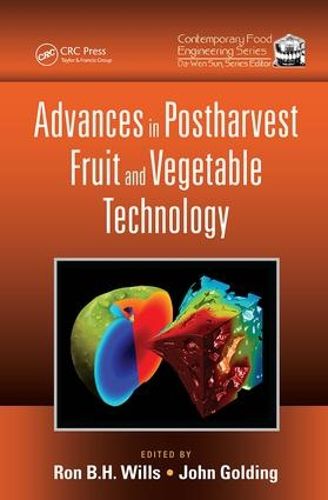Readings Newsletter
Become a Readings Member to make your shopping experience even easier.
Sign in or sign up for free!
You’re not far away from qualifying for FREE standard shipping within Australia
You’ve qualified for FREE standard shipping within Australia
The cart is loading…






Advances in Postharvest Fruit and Vegetable Technology examines how changes in community attitudes and associated pressures on industry are demanding changes in the way technology is used to minimize postharvest loss and maintain product quality. In particular, the book discusses important drivers for change, including:
Using more natural chemicals or physical treatments to replace synthetic chemicals Increasing the efficiency of older, more traditional methods in combination with newer biocontrol treatments Leveraging a range of biomolecular research tools or omics to efficiently gather and assess mass information at molecular, enzymic, and genetic levels Using modelling systems to identify key changes and control points for better targeting of new treatments and solutions to postharvest problems
The postharvest handling of fresh fruits and vegetables plays a critical role in facilitating a continuous supply of high-quality fresh produce to the consumer. Many new technologies developed and refined in recent years continue to make possible an ever-expanding supply of fresh products. This volume examines a range of recently developed technologies and systems that will help the horticulture industry to become more environmentally sustainable and economically competitive, and to minimize postharvest quality loss and generate products that are appealing and acceptable to consumers.
$9.00 standard shipping within Australia
FREE standard shipping within Australia for orders over $100.00
Express & International shipping calculated at checkout
Advances in Postharvest Fruit and Vegetable Technology examines how changes in community attitudes and associated pressures on industry are demanding changes in the way technology is used to minimize postharvest loss and maintain product quality. In particular, the book discusses important drivers for change, including:
Using more natural chemicals or physical treatments to replace synthetic chemicals Increasing the efficiency of older, more traditional methods in combination with newer biocontrol treatments Leveraging a range of biomolecular research tools or omics to efficiently gather and assess mass information at molecular, enzymic, and genetic levels Using modelling systems to identify key changes and control points for better targeting of new treatments and solutions to postharvest problems
The postharvest handling of fresh fruits and vegetables plays a critical role in facilitating a continuous supply of high-quality fresh produce to the consumer. Many new technologies developed and refined in recent years continue to make possible an ever-expanding supply of fresh products. This volume examines a range of recently developed technologies and systems that will help the horticulture industry to become more environmentally sustainable and economically competitive, and to minimize postharvest quality loss and generate products that are appealing and acceptable to consumers.